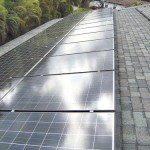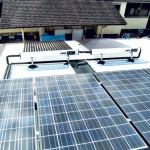Don’t Let the Solar Industry “Burn” You
Pacific Islands Construction believes there are many issues regarding the solar industry that the consumer should understand before and after they make an investment in a photovoltaic system. The following information is provided to help educate the consumer.
The PV manufacturing sector is in the midst of a protracted downturn because of aggressive capacity build-up in the last few years, as well as severely curtailed subsidies in major feed-in tariff markets, which result in massive supply-demand imbalances. As a result, GTM Research reported last week that it expects up to 180 PV manufacturers will either be bankrupt, consolidated or just exit the market over the next two years. It also has been concluded that even larger diversified firms — such as LG, Samsung, Sharp, Panasonic and Bosch — will exit the market to cut their losses after concluding that they have no competitive edge.
What does this mean for module warranties and defective equipment servicing?
Defective modules have turned up in greater numbers over the last few years with power losses that have exceeded 30 percent. One defect is called Potential Induced Degradation, which is a leakage of current flows between cells and module frames. The resulting power loss and cell degradation is just the beginning of what many fear is a common problem rather than an exception. Photon magazine recently wrote about “snail trails,” which have been found in more than 25 manufacturer’s modules. The discolored appearance in the module signifies hot spots, which result in less energy produced. For the most part, the industry has kept these problems out of public view, especially in light of the industry’s economic conditions. It might be argued that these problems are the economic result of poor profitability within the industry.
Poor installation practices within the local industry are also a concern when considering temperature response and wind uplift. PV modules should be elevated about 10 inches off the roof to help ventilate and cool the modules. PV modules operating at higher temperatures have significantly reduced voltage. Long-term, higher operating temperatures in the modules lead to premature degradation of the module encapsulation. For the above reasons, it is desirable to install modules to allow them to remain as cool as possible. Most systems in Hawaii are installed too close to roof surfaces, resulting in less power and shorter life spans.
There is a lot to consider when purchasing a PV system. Price is often a reflection of poor installation practices and using lower-quality manufacturers that will not be in business in the future. Pacific Islands Construction feels that it is its responsibility to provide what is right for its customers, not what is the cheapest option. Pacific Islands Construction can be reached by calling 841-7756 if you are interested in discussing your PV needs. Or visit www.pacificislandsconstruction.net.
PACIFIC ISLANDS CONSTRUCTION
contact // 841-7756
web // Pacificislandsconstruction.net

